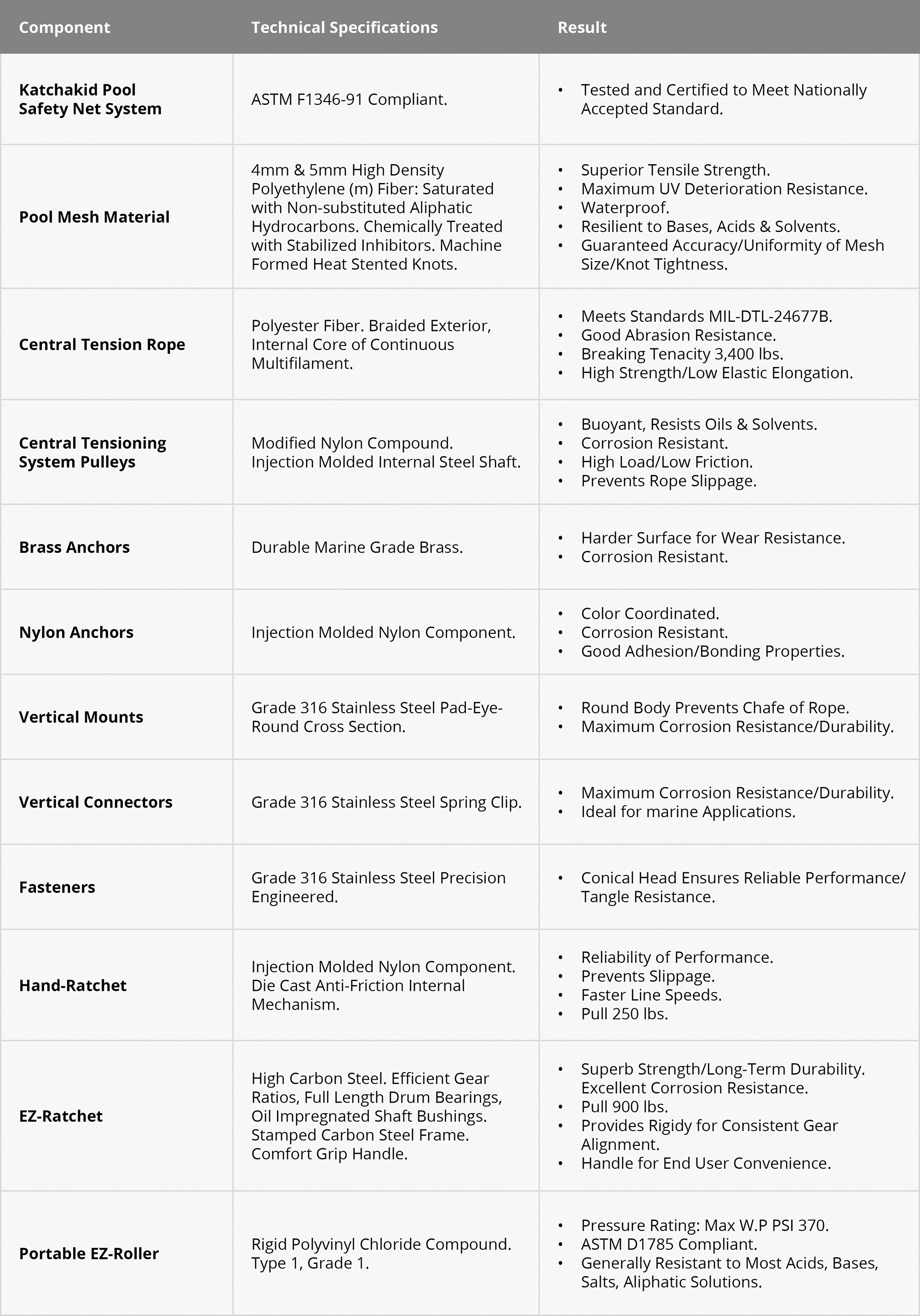This website uses cookies so that we can provide you with the best user experience possible. Cookie information is stored in your browser and performs functions such as recognising you when you return to our website and helping our team to understand which sections of the website you find most interesting and useful.
The Ultimate Pool Guide
The Ultimate Pool Guide
So you have decided to get a swimming pool for your home but you have no idea where to start when it comes to choosing the right one for you, or dealing with the various safety issues that having a pool requires you to consider. In this guide we will be taking a look at the ins and outs of getting your own pool, leaving you well positioned to make the right choice for you and your family.
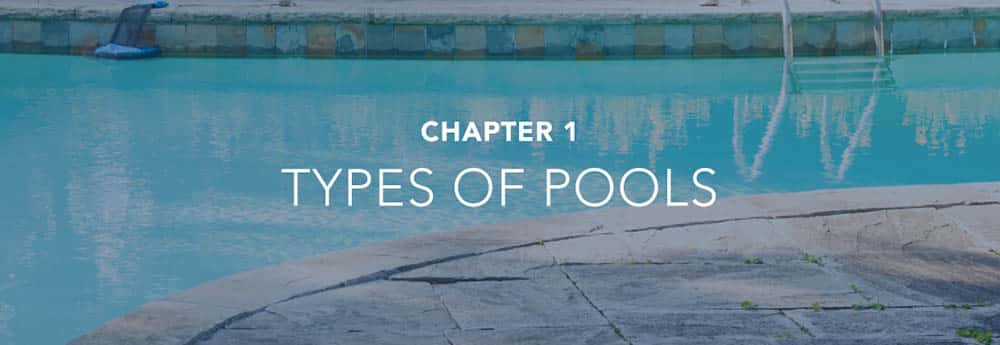
Chapter One – Types of Pools
Before making any sort of purchase, you need to understand the various types of pool that are available to the homeowner. In the most general of terms, pools come in three varieties: fibreglass, concrete and vinyl liner. Each has its own pros and cons to consider before you lay down any of your hard-earned cash, so let’s take a look at what each option has to offer.
Speed and quality are the biggest advantages that you are going to get with a fibreglass pool, as they are very quick to install and require little in the way of maintenance once you have it up and running. This makes them ideal for people who aren’t going to be able to dedicate too much of their time to keeping the pool in perfect condition. You may also find that a lot of fibreglass pool linings come with built in ladders and steps, which cuts down on the costs involved when it comes to maintenance.
It’s not all rosy though, as they do come with some cons. The biggest one is that you are going to be limited to certain shapes, sizes and designs, which means those who are looking for a large pool or a custom-made model are going to be disappointed. Furthermore, though the long-term operating costs of the pool will be low, you’re usually going to find that the initial investment you have to make is much higher due to cost of materials and production. As such, fibreglass pool linings are best for people who are dipping their toe into the world of pool ownership and don’t want to have worry about maintenance or working on pool design.
The immediate advantage of going for the vinyl liner option is the upfront cost, as you will be spending far less on this type of pool than you would a concrete or fibreglass pool. You will also be offering plenty of customization options, so you can build a pool that suits you, rather than having one that is pre-fab and may not actually suit the purposes that you want. The non-abrasive nature of vinyl is also great if the pool is going to be used by kids, as they won’t experience any sort of physical discomfort when they walk along the bottom of the pool, for example.
Unfortunately, that lower initial cost is often a reflection on the materials being used, as vinyl simply is not as sturdy as the other options on this list. You’re going to find that you have to replace the lined after a few years, which leads to you spending more money if you consider the pool as a long term investment. It will also carry less value than other types of pool, which is a factor if you choose to sell your home, plus you’re going to have to be a lot more careful when using the pool. The vinyl is only a little thicker than paper, so an errant tree branch or over-enthusiastic dog is more than capable of cutting into it and forcing a repair that could leave you out of pocket.
Concrete
The biggest advantage to choosing concrete is always going to come down to aesthetics. You can do whatever you want with this type of material, allowing you to design the pool exactly as you want it to be, safe in the knowledge that it will be sturdy enough to last a long time as long as it is properly maintained. If you are particularly ambitious with your designs, it is more than possible to create a real work of art that fits into the décor of your home and increases its resale value in the process.
Of course, all of this extra choice comes with a price tag attached to it, both in terms of the initial investment and its upkeep. As sturdy as concrete is, you’re still going to have to spend money on renovating it every decade or so, with resurfacing and retiling being the main expenses. You’re also going to have to deal with more maintenance in order to keep the concrete in good shape and will need to use more chemicals in the water due to the porous nature of the material. For some, this may be a lot more work and money than they are willing to put into a pool if they are just looking for something to paddle around in every so often.
A lot of people shy away from above ground pools because they don’t look as attractive as their more popular below ground brethren, but they are an excellent choice for those who are shopping on a budget and just want a pool to paddle around in.
While the cost is a big plus for these kinds of pool, you are going to have to deal with the fact that you will have little control over the size and shape of the pool. Furthermore, you will have to deal with the maintenance aspect, ensuring you check pipes and maintain the chemical composition of the water so that you don’t end up dealing with white flecks from the filter.
Right at the other end of the spectrum in terms of cost and aesthetics is the infinity pool. These have become increasingly popular with high-end hotels and other expensive establishments, so they make for a great status symbol for people who want to something a little different out of their pool. They work by making use of an overflow system, where a catch basin is placed at the base of the pool and then circulates back into the pool, allowing you to keep it constantly full. They can also be incorporated into a number of different designs, allowing you to create an amazing centrepiece.
Of course, the big prohibiting factor here is cost. These types of pool have only recently been made available to domestic buyers and they still carry a price tag that dwarfs practically every other option, particularly if you are looking to corporate other design features around the pool. Maintenance costs are also going to set you back a bit over time, especially if something goes wrong with the catch basin and plumbing system.
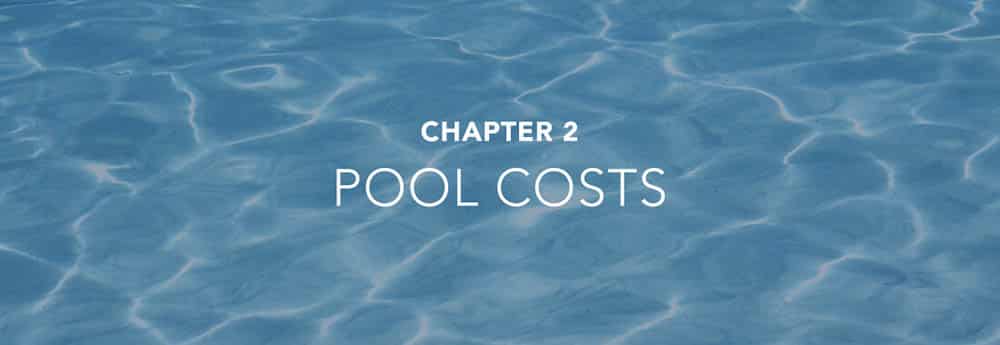
Chapter Two – Pool Costs
With so many different kinds of pool available, you can expect there to be a number of different prices that you can expect to pay with each one. Here we will break down the initial cost of installing each of the pools that we spoke about in Chapter One, in addition to taking a brief look at some of the additional costs you might expect to pay.
A fibreglass pool can set you back a fairly large sum of money that is often equivalent to that of a concrete pool. You can expect to pay anywhere between the $30,000 to $50,000 range, depending on the size and complexity of the pool mould. If you decide to incorporate a concrete component into the design, such as having the edges of the pool layered with a concrete pattern, you can expect to see that number rise by as much as $20,000. All told you may end up paying $70,000 or more for a particularly complex pool design before you even consider additional features like pool lights or heating pumps. The plus side is that maintenance costs are fairly low, so once the initial investment has been made you won’t face many large bills afterwards.
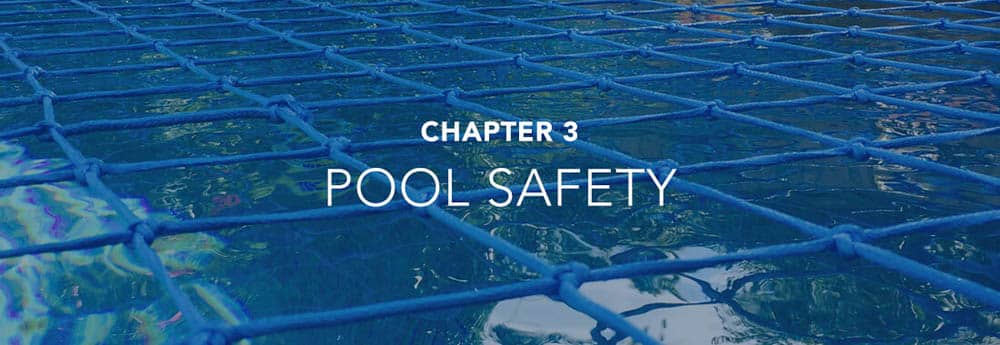
Chapter Three – Pool Safety
A pool fence is the easiest way to keep children and those who can’t swim away from the pool, though many consider them to be something of an eyesore, particularly when they are used to surround an outdoor pool. However, if safety is a concern there is simply no better way to keep people away who shouldn’t be going into the pool.
In most cases these fences can be installed by specialist companies like ours and will be a minimum of four feet in height while also offering easy access to the pool. The cost will be determined by the size of the fence and how much work needs to be put into the installation process.
Whether or not you make the choice to get one is really going to be determined on who is going to be exposed to the pool. If there are only adults in the house, or the pool is particularly shallow, you may be able to get away with not having a fence installed. However, once children are introduced into the mix they become an essential safety feature unless you want to be keeping an eye on the kids for every moment of the day when they are outside.
Furthermore, there are also considerations to be made in terms of the effect a fence will have on your garden. Many people simply do not want to have to erect a structure that may become an eyesore and prevent them from enjoying their garden in the way they normally would have.
The most effective alternatives to fences is getting a net for the pool. As long as it has been installed correctly, a net will ensure that no animals or small children will find their way into the pool, plus you do not have to modify your garden in any way in order to ensure you can use it.
This option is particularly useful for people who have chosen to purchase an above ground pool, as purchasing a fence for this is often impractical given that they are not built into the ground, yet children may still be capable of scaling the pool and causing themselves injury of the proper safety precautions aren’t taken.
A good pool net such as those developed by us here at Katchakid are custom made to fit your pool and use materials that are considered practically impossible to break during the course of everyday use. This makes them an excellent alternative to fences, in addition to offering a means to quickly childproof a pool if relatives with children decide to come around.
The only catch with these solutions is the net structure itself. As there are so many gaps in the net, it is possible for children or small animals to get their limbs caught in the net. This should not be a problem if there is an adult present to free them, but if there is not you may create an additional safety concern, especially in the case of pets who are liable to struggle and cause themselves injury if they can’t free themselves.
In addition to the two products above, which should provide an all-purpose safety solution for you pool, there are also a host of other safety tips that you should keep in mind.
Always insist that any children who enter the pool have adult supervision. This should be the case for even the strongest child swimmers, as it only takes one mistake to put them in trouble and potentially create a situation where they might drown. Remember that you do not have the benefit of an independent lifeguard in your garden, so if kids or any vulnerable people are going to enter the pool, make sure that you have somebody watching them.
It is worth taking some training in the basics of poolside first aid so that you can help anybody who does experience difficulty while swimming in your pool. At the very minimum you need to be aware of CPR techniques that can be used to potentially save somebody who has almost drowned, but you should ideally be capable helping with most injuries that may be suffered in a pool.
Make sure that you read instructions carefully when handling the chemical composition of the pool. If you use too much of a single chemical, such as chlorine, you may find that the water has an adverse effect on the people who enter the pool, resulting in severe illness or even worse. Understand the instructions that come with the pool and make sure to discuss them with a professional if you are not sure.
Avoid running near the pool at all times, especially if you have a concrete fixture surrounding the pool. While this may only result in a person tripping and falling into the pool, in the worst case scenario a person may injure themselves during the fall, leaving them unable to exit the pool. Furthermore, if a person falls into the pool at the shallow end, it is entirely possible that they will impact the bottom of the pool with such force as to render them unconscious, which is extremely dangerous even when somebody is supervising the activity in the pool.
By enrolling your kids in lessons delivered by a professional, you are ensuring that they have the best chance possible of keeping themselves safe in the pool. While you should still supervise children at all times when they are in the pool, by having them take lessons you will improve their swimming skills, which will ensure that there is less chance that they might run into issues while in the pool.
Finally, consider purchasing a range of flotation devices that can help in cases where a person starts struggling. Life rings or simple floats thrown out to somebody who has run into trouble can often help to keep them above the surface of the water. It may also be worth taking a local lifeguard’s course to find out about any useful techniques that you can use to get somebody out of the water if they are too heavy to lift on your own.
By taking all of these safety tips into account, you should be able to ensure that your pool is kept safe for everybody who uses it, allowing you to enjoy it much more in the process.
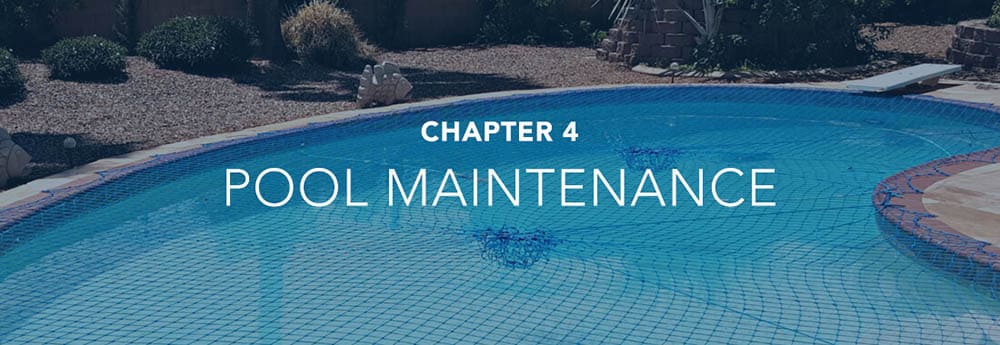
Chapter Four – Pool Maintenance
If your pool is situated in the garden, which is the most common place for them to be built, you are eventually going to have to deal with the issue of fauna and flora finding its way into your pool. This is especially the case if you have a lot of trees in your garden, as falling leaves can not only make your pool less appealing to swim in, but can also cause various issues with filters and other aspects of the pool.
One of the simplest solutions to this issue is a pool cover, which works in a similar way to a safety net in that it is designed to cover the entire area of the pool. However, this is where the similarities end, as a cover should not be considered a safety feature and can actually cause problems if somebody falls onto it without a net underneath to prevent them from getting wrapped in the cover while underwater.
However, as long as you keep pool safety in mind you should be able to use a cover to catch all of the leaves that would otherwise have found their way into your pool, allowing you to strip the cover back and enjoy a clearer swim in the process. Better yet, you won’t have to worry about debris clogging up vital areas of the pool and leading to issues that will cost a lot of money to repair.
Even if you have purchased a cover, you are still going to have to clean your pool from time to time. After all, you can’t have a cover over the top of it when there are people inside, which means some debris is naturally going to find its way into the pool.
There are three techniques that you need to keep in mind for pool cleaning: Skimming, Brushing and Vacuuming. Each of the following should be done on a weekly basis to prevent the build-up of algae and ensure your water stays clean and usable.
This is the most basic pool cleaning technique and simply involves getting a net or other material capable of capturing debris and scooping up all of the flora and fauna that might find its way into your pool off the surface of the water. This should ideally be done on a daily basis, else you will just end up making the other two tasks much more difficult.
Thankfully, this job can be made much easier if you decide to purchase a pool cover, but it is still something that you should take a little bit of time to do each day if you are going to enjoy a nice, clean swimming pool.
Once the skimming has been competed it is time to move onto the brushing. This should be done in any areas where sediment has the potential to build up, such as on the pool steps, ladders and on the walls and corners of the pool itself. This prevents the build-up of bacteria, which can in turn lead to algae and other unsanitary materials forming in the pool.
The best way to brush is to get a telescopic pole and attach a suitable brush to the end of it. This brush should have been developed with swimming pools in mind, so that it can essentially act in much the same way as a squeegee, allowing you to dislodge all of this sediment and clean the more difficult nooks and crannies in the pool.
Vacuuming
It may seem a little counterintuitive to vacuum a pool, but it is essential if you want to keep the bottom of the pool clean and safe to use. There are a number of automated vacuums on the market that help to make this process a lot easier, so you will have a choice of the following:
A suction-side vacuum will attach to your skimmer and draw debris to it, though it relies on the filter to get rid of this debris. This can lead to damage being caused if the vacuum pulls in a larger rock or something else that the filter is not equipped to deal with.
A robotic pool cleaner is completely automated, so you just need to plug it in and let it get to work. It will traverse the bottom of the pool, sucking up debris and catching it in a little bag that is attached to the vacuum. The only issue is the cost, which may prohibit some people from buying one.
Pressure-side cleaners also make use of your filter to clean the water, only in this case the vacuum will plug onto the return jet and use the water coming out of your filter to create a vortex that pushes debris towards a handy bag that can then be pulled out of the pool and disposed of.
However, in cases where a lot of algae had built up or the pool has been allowed to become especially dirty, you may need to manually vacuum the pool. This will require you to purchase a telescopic pole and vacuuming equipment that is suitable to use in a pool. Though it is often more time-consuming and labour intensive, this technique is best if you want to ensure that the pool gets as good a clean as possible.
A lot of people solve the task of maintaining the pool by creating a schedule that ensures every major task is completed. This should incorporate every aspect of maintenance, from cleaning to replacing the chemicals in the water. The following tips will help you to create a robust schedule that is easy to stick to.
Create a list of every important task that needs to be completed in order to maintain the pool properly and how often each task needs to be done.
Assign each of these tasks to a person, whether it be one member of the family who is dedicated to maintenance, or multiple people who will work in tandem to ensure that each task is completed quickly. Make sure that each person knows what they are doing with their tasks.
Make sure that you understand your chemicals and how to properly balance them in your pool. Even if you make the effort to check them on a regular basis, failing to understand what you are actually looking at may lead to issues down the line.
You should also make sure to understand the family’s swimming habits. Try to take notes of the times of the day when the pool is completely clear of people and maintenance is possible, scheduling your tasks into these time slots.
Create your schedule and place it somewhere that it is clearly visible. It should be as clear and easy to read as possible, while also providing you with space to check off tasks as they are completed.
Create reminders if you feel as though people may forget to do their bit. It might be worth placing alerts into your phone to tell you that a task needs doing.
With all of the above in mind, you should be able to create a strong schedule that will ensure the pool is properly maintained at all times.
Plugging up your skimmers and return jets doesn’t need to be a difficult task. By walking into your local pool suppliers and asking them for a set of rubber plugs that can be expanded using wingnuts, you will solve the problem in no time at all.
There are a range of other useful products that you can use for pool maintenance, so be sure to consider you individual situation and purchase whatever works best for you.
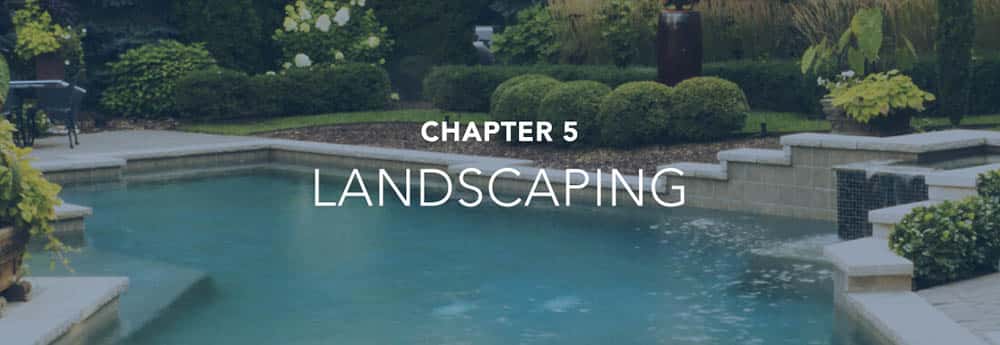
Chapter Five – Landscaping
Having your pool installed is often just the first step. Most people will want to complete the design by using landscaping, allowing them to maintain some gorgeous plants and create an overall look for the pool that makes it as appealing as possible. Of course, landscaping around a pool comes with a number of issues that you need to take into consideration before you get started, including all of the following.
Summer plants look gorgeous when next to a pool, but you know what summer plants attract right? Bees, wasps and other insects that are looking to get the sweet nectar out of one of these plants will be finding their way to your pool if you plant certain types of flowers near it, which can make the swimming experience extremely uncomfortable. Again, you want to keep children as safe as you can from insects that are capable of stinging, plus you may need to avoid them yourself if you suffer from an allergy. If you really want to achieve the effect but don’t want a cascade of insects ruining your day, consider using plastic plants.
Have you considered the roots that your plants will put down before you started landscaping? If you haven’t, you may well find that the roots eventually start pushing through the concrete surrounding the pool or causing other maintenance issues that will not only lead to the plant having to be uprooted, but also the pool having to undergo repairs that will often cost you a pretty penny. Avoid having elms, oak trees or any other plants that put down strong roots anywhere near your pool.
If you insist on having a tree and have picked out a few that won’t cause problems due to its roots, you need to make a choice between deciduous and evergreen trees. Simply put, a deciduous tree is going to end up shedding all over your pool on a regular basis, even if it does look more attractive. An evergreen tree, on the other hand, may not catch the eye quite as well, but it is far easier to clean up after it.
Finally, the most important point you need to consider when selecting poolside plants is the amount of maintenance that you are going to have to do in order to keep things looking attractive while also ensuring that the pool is protected. Take all of the work that you are doing to keep your pool in good shape and then add on the amount that you are going to have to do in order to properly maintain all of the plants that surround it. You may find that you end up spending so much time working that you don’t get to actually enjoy the pool, so consider just going for simple plants or the plastic and cloth varieties that will look the part and require virtually no upkeep.
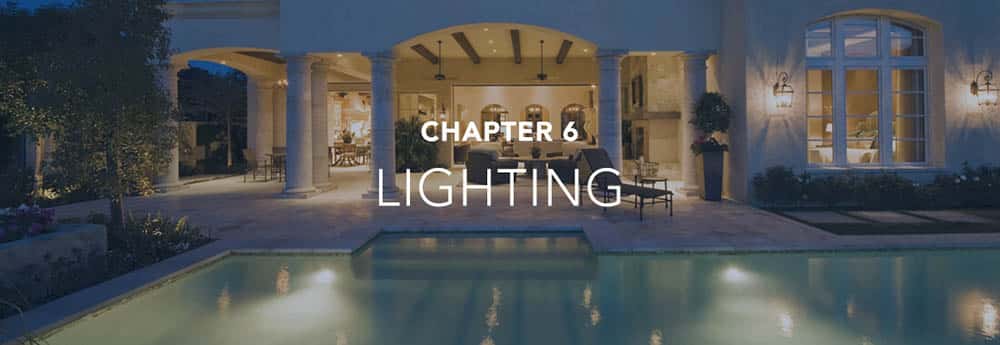
Chapter Six – Lighting
Let’s face it, as much fun as it is to swim during a warm summer’s day, there is a certain amount of romanticism attached to enjoying a swim at night time too. Of course, if you’re looking to do that you are going to need to make sure that you have lighting available, both to make the pooler a safe place to be around and also to perhaps set the mood for your night time swimming adventures. Here are a couple of useful suggestions.
Lights that float directly on the water are becoming increasingly popular and can be used to set the perfect romantic mood if you are just enjoying the pool with a loved one. However, the fact that they just float on the water makes them irritating to anybody who wants to use their pool to actually swim lengths during the night, as they will just get in the way. If you’re just looking to set a certain mood or create a nice effect, these can be a great choice.
This is the most common solution to lighting a pool at night and it serves the practical purpose of making it much easier to see where you are going when you are in the pool. There are a wide variety of lights that you can choose from if you want to go this route, but you will have to make sure you have a trained technician on hand in order to install them properly and ensure they remain watertight at all times. You may also need to maintain them on a fairly regular basis to ensure they perform like they are supposed to.
If you have decided to go the inner pool lighting route, you can have a little bit of fun with the concept by choosing bulbs that are capable of changing colours. These colours can usually be changed by just pressing a switch, making them perfect for those who can never quite settle on what they want their pool to look like at night, so want to have as many options available to them as possible. You will be able to set a romantic mood one evening before deciding you want a bright colour that will allow you to swim easily the next.
If none of these options float your boat, you can choose to incorporate lighting into the landscaping you have built around the pool in practically anyway that you see fit. This option offers you the best in terms of customization and variety, allowing you to build your lighting into the overall design of the pool to create something that looks amazing. Better yet, there is nothing stopping you from combining this with inner pool lighting and enjoying the best of both worlds.

